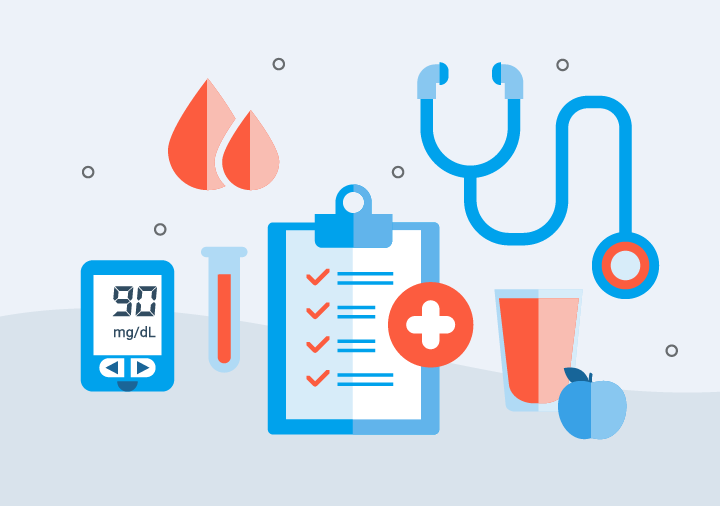
Your cart is currently empty.

There’s a reason why there’s been more discussion about type 2 diabetes, both in the medical community and in the news. The Centers for Disease Control and Prevention (CDC) reports that the percentage of Americans with type 2 diabetes went from .93% (1.6 million people) of the population in 1958 to 7.4% (23.4 million people) of the population in 2015. The CDC also reports that diabetes is now the seventh leading cause of death in the United States.
While it’s clear that type 2 diabetes is becoming increasingly prevalent, many people still don’t recognize the signs (increased thirst, urination, and appetite) associated with the disease. This means that more than a few people are going about their daily lives, not realizing their high blood sugar levels are slowly damaging their bodies. For this reason, we seek to increase awareness about what to look for in terms of diabetes symptoms, and how to obtain a definitive diagnosis with a blood test.
As mentioned, there are several symptoms typically associated with the development of type 2 diabetes, often referred to as the “3 P’s of diabetes.”
The first symptom that may be an indication of diabetes is polydipsia, otherwise known as increased thirst. If a person continually feels they have a dry mouth, or they’re consistently more thirsty, they may have diabetes.
Polyuria is a noticeable increase in urination, and it ties in with polydipsia. When a person’s blood sugar levels are continually high, their body attempts to remove some of the excess sugar through urine. As urination increases to abnormal levels, the person will subsequently experience dehydration because along with the excess blood sugar, the body is also eliminating abnormal amounts of water and electrolytes. In turn, in an attempt to restore balance, the body responds to dehydration by increasing a person’s thirst.
Polyphagia is a term used to describe an increase in hunger. Diabetics may notice an increase in hunger because the high levels of blood sugar are unable to completely enter cells in their body to be used as energy. In other words, diabetics remain hungry even after eating because their body “thinks” it’s still hungry. This is because the energy (glucose) from their meal remains circulating in their bloodstream rather than entering their cells.
In addition to polyphagia, polyuria, and polydipsia, several other symptoms are often associated with the development of diabetes. Other symptoms include:
When evaluated separately, each of the above-described symptoms could be a sign of another illness rather than diabetes. Even so, if a person experiences an increase in appetite, urination, and thirst, along with some of the other symptoms of diabetes, it could be an indication that they have, indeed, developed diabetes.
The only way to know for certain whether a person is diabetic is to take the appropriate blood tests. The two most common diabetes blood tests are the fasting blood sugar test and the A1C test. A fasting blood test is taken typically in the morning after a person has fasted overnight. If a person’s blood sugar is 99 mg/dL or lower, their blood sugar is considered normal. Between 100-125 mg/dL is considered pre-diabetic, and over 125 mg/dL is considered diabetic.
The A1C test measures a person’s average blood sugar level over the prior 2-3 months. A test result below 5.7% is considered normal. An A1C of 5.7-6.4% is considered pre-diabetic. Anything over 6.5% and the person is considered to be diabetic.
Anyone who’s been experiencing some of the symptoms associated with developing diabetes is wise to be concerned about their health. Obtaining the right blood tests is the first step in developing a plan to counter the illness. With Priority Lab Testing, you’ll get fast, accurate blood sugar test results in as little as one day.